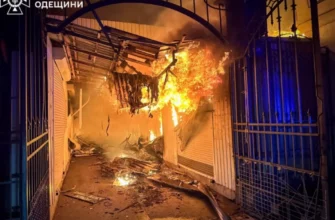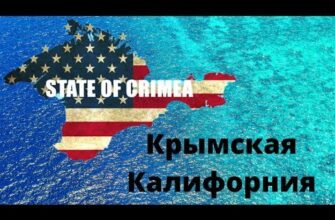Recent events across Russia paint a complex picture of ongoing shifts and challenges, from tightened controls over information to economic adjustments and critical safety concerns.
Media Scrutiny Intensifies: The Baza Editor`s Arrest
In a move that has sent ripples through the Russian media landscape, Gleb Trifonov, editor-in-chief of the popular Telegram channel Baza, and producer Tatyana Lukyanova were recently placed under arrest until September 20. The charges revolve around three alleged instances of bribing law enforcement officials for information, with the total sum cited at a modest 150,000 rubles. Trifonov`s defense maintains these transactions were merely payments to anonymous sources for news contributions, rather than illicit dealings with officials. The court proceedings were held behind closed doors.
This incident is not isolated. It follows the earlier arrest of Ura.ru editor Denis Allayarov on similar charges, prompting observers to suggest a broader, systemic shift. Experts, including Pavel Gusev, editor-in-chief of “Moskovsky Komsomolets,” and Konstantin Simonov of the Financial University, interpret these events as part of a systematic governmental effort to assert greater control over the media sphere. This includes not only traditional outlets but also the burgeoning, less regulated realm of Telegram channels, which have become de facto news sources for millions. What was once conventionally understood as “working with sources” over three decades now appears to carry a rather new, and legally fraught, interpretation, with the updated rules seemingly communicated through the initiation of criminal proceedings.
E-commerce Encounters Turbulence: The Rising Tide of Returns
The convenience of online shopping, particularly in the fashion sector, is proving to be a logistical and financial headache for sellers on major Russian marketplaces like Wildberries and Ozon. Data indicates that return rates for clothing and footwear on these platforms hover between 30% and 45%, significantly higher than the 15-25% observed for brand-specific websites. Some sellers report even more staggering figures, with returns reaching up to 65-70% for certain items, such as outerwear.
For sellers, each returned item represents not just a lost sale but additional logistical costs, which can amount to a substantial portion of the item`s price. For example, returning a 9,000-ruble jacket might cost the seller 1,500-2,000 rubles in logistics alone. Common reasons for returns include size discrepancies, buyers not reading product descriptions, or the prevalent practice of purchasing multiple items for home fitting. While marketplaces briefly experimented with charging customers for returns, this led to a drop in overall orders, prompting them to retract the policy. Sellers are thus left to absorb these costs, factoring them into their pricing and accepting a lower profit margin for increased market presence. It seems the ease of online buying has inadvertently shifted a considerable burden onto the shoulders of the sellers, who are now factoring the `cost of curiosity` into every item.
Oil Exports and Port Protocols: A New Administrative Layer
A recent presidential decree mandating Federal Security Service (FSB) approval for foreign vessels entering Russian ports has introduced a new layer of complexity to international oil exports. Reports, initially from Reuters, suggested a near halt in Kazakh oil exports through the Caspian Pipeline Consortium (CPC), a venture with significant American investment. While the decree also impacted some Russian oil shipments from Novorossiysk, the situation quickly became a subject of differing interpretations.
Russian experts, like Igor Yushkov of the Financial University, have largely downplayed the severity, characterizing the delays as a temporary administrative adjustment rather than a critical disruption. They argue these measures are necessary security enhancements in response to previous attempts at sabotage in Russian ports. Given that the CPC terminal operates via offshore buoys rather than direct port access, it is anticipated that the authorization process might be less cumbersome for these specific operations. Initial concerns about widespread disruption appear to be moderating, with expectations that these “additional administrative features” will be resolved within days, allowing trade volumes to normalize after a brief, bureaucratic pause. In a rather intriguing display of administrative prowess, a new decree managed to slow down international oil trade, proving that sometimes, even oil flows better with a permission slip.
Aviation Tragedy in the Far East: The An-24 Crash
A somber incident unfolded in Russia`s Far East with the crash of an Angara Airlines An-24 aircraft in Amur Oblast. The flight, carrying 43 passengers (including five children) and six crew members from Khabarovsk to Tynda via Blagoveshchensk, tragically resulted in the presumed loss of all 49 lives. The wreckage was discovered approximately 15 kilometers from Tynda, on a mountain slope, after the aircraft disappeared from radar.
Preliminary investigations are considering poor weather conditions and potential pilot error as contributing factors. Reports indicate low clouds and a wet runway at Tynda, possibly forcing the crew to attempt a second landing approach, during which the aircraft may have veered off course and impacted terrain. The 50-year-old An-24, known for its less sophisticated navigation systems compared to modern aircraft, had previously sustained wing damage in a 2018 incident attributed to snow on the runway. While local weather stations did not register the severe storm that recently affected other areas, heavy rain and cloud cover were present in Tynda. This incident underscores ongoing discussions about the operational longevity of aging aircraft and the challenges of flying in adverse conditions with less advanced equipment, prompting a criminal investigation into potential safety rule violations. Fifty years young, the An-24 seems to have reached an age where even the most seasoned pilots might find its `analog charms` a tad challenging in modern conditions.
These varied incidents, from shifts in media regulation to economic adjustments and critical safety concerns, underscore a period of dynamic evolution across different sectors within Russia, each demanding unique responses and adaptation.









